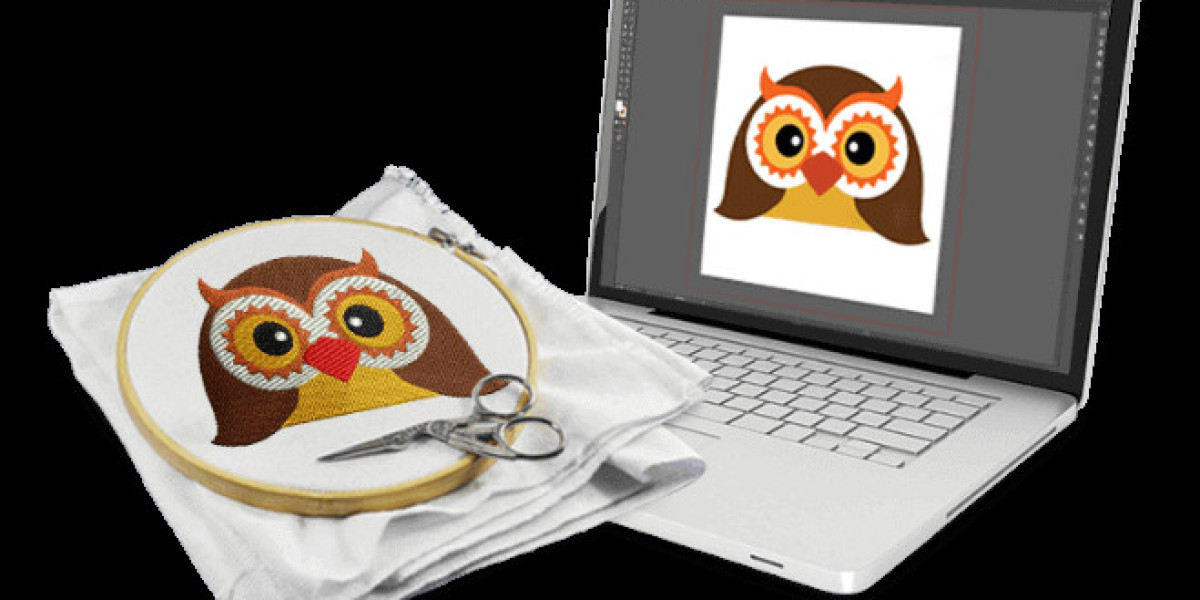Introduction
Embroidery digitizing is the process of converting artwork into a digital file that embroidery machines can read. Whether you need custom logos, patches, or intricate designs, high-quality digitizing ensures crisp, professional results.
With so many services available, finding the right one can be tricky. This guide covers the best embroidery digitizing service, what to look for, and how to choose the perfect provider for your needs.
What Is Embroidery Digitizing?
Embroidery digitizing transforms images, logos, or text into a stitch file (like .DST or .PES) that embroidery machines follow. Unlike printing, embroidery involves thread layers, meaning the design must be optimized for stitching.
A well-digitized file considers:
Stitch types (satin, fill, running)
Thread density
Underlay stitches for stability
Fabric type (affects tension and pull)
Poor digitizing leads to gaps, thread breaks, or distorted designs. That’s why professional digitizing services matter.
Top Embroidery Digitizing Services
1. Absolute Digitizing
Why Choose Them? Specializes in small details and complex designs.
Turnaround: 24–48 hours
Best For: Logos, corporate branding
2. Digitizing Buddy
Why Choose Them? Affordable with unlimited revisions.
Turnaround: 1–3 days
Best For: Small businesses, patches
3. Cool Embroidery Design
Why Choose Them? High-quality 3D puff embroidery.
Turnaround: 2–4 days
Best For: Hats, jackets, promotional items
What to Look for in a Digitizing Service
Not all digitizing services are equal. Here’s what to consider:
1. Experience & Expertise
Look for companies with years in the industry. Experienced digitizers understand stitch angles, densities, and fabric behavior.
2. File Formats Supported
Ensure they provide files compatible with your machine (e.g., .DST, .PES, .EXP).
3. Turnaround Time
Need a rush order? Check if they offer expedited services.
4. Revisions Policy
A good service allows free tweaks if the first file isn’t perfect.
5. Pricing
Prices vary by complexity. Simple logos may cost $10–$20, while detailed designs go up to $50+.
DIY vs. Professional Digitizing
DIY Digitizing (Software Like Wilcom or Hatch)
Pros: Full control, no outsourcing costs.
Cons: Steep learning curve, time-consuming.
Professional Digitizing Services
Pros: Expert results, saves time, fewer errors.
Cons: Additional cost.
For most businesses, outsourcing is better—unless you’re willing to master digitizing software.
Common Embroidery Digitizing Mistakes
Even pros make mistakes. Watch out for:
Poor Underlay Stitches → Causes fabric puckering.
Incorrect Density → Too thick (stiff fabric) or too thin (gaps).
Ignoring Fabric Type → Stitches behave differently on denim vs. polyester.
A skilled digitizer avoids these issues.
How to Prepare Artwork for Digitizing
To get the best results:
Use Vector Files (AI, EPS, PDF) – Clean lines = cleaner stitches.
Avoid Tiny Details – Small text under 0.2 inches may blur.
Specify Colors – List Pantone or RGB codes for accuracy.
Conclusion
Choosing the right embroidery digitizing service ensures sharp, durable designs for logos, patches, and apparel. Whether you need speed, affordability, or intricate detailing, top providers like Absolute Digitizing, Digitizing Buddy, and Cool Embroidery Design deliver quality results.
For one-off projects, outsourcing is the easiest route. But if you embroider frequently, learning basic digitizing could save long-term costs. Either way, a well-digitized file makes all the difference in professional embroidery.
Final Tip: Always request a test stitch-out before bulk production to confirm quality!








